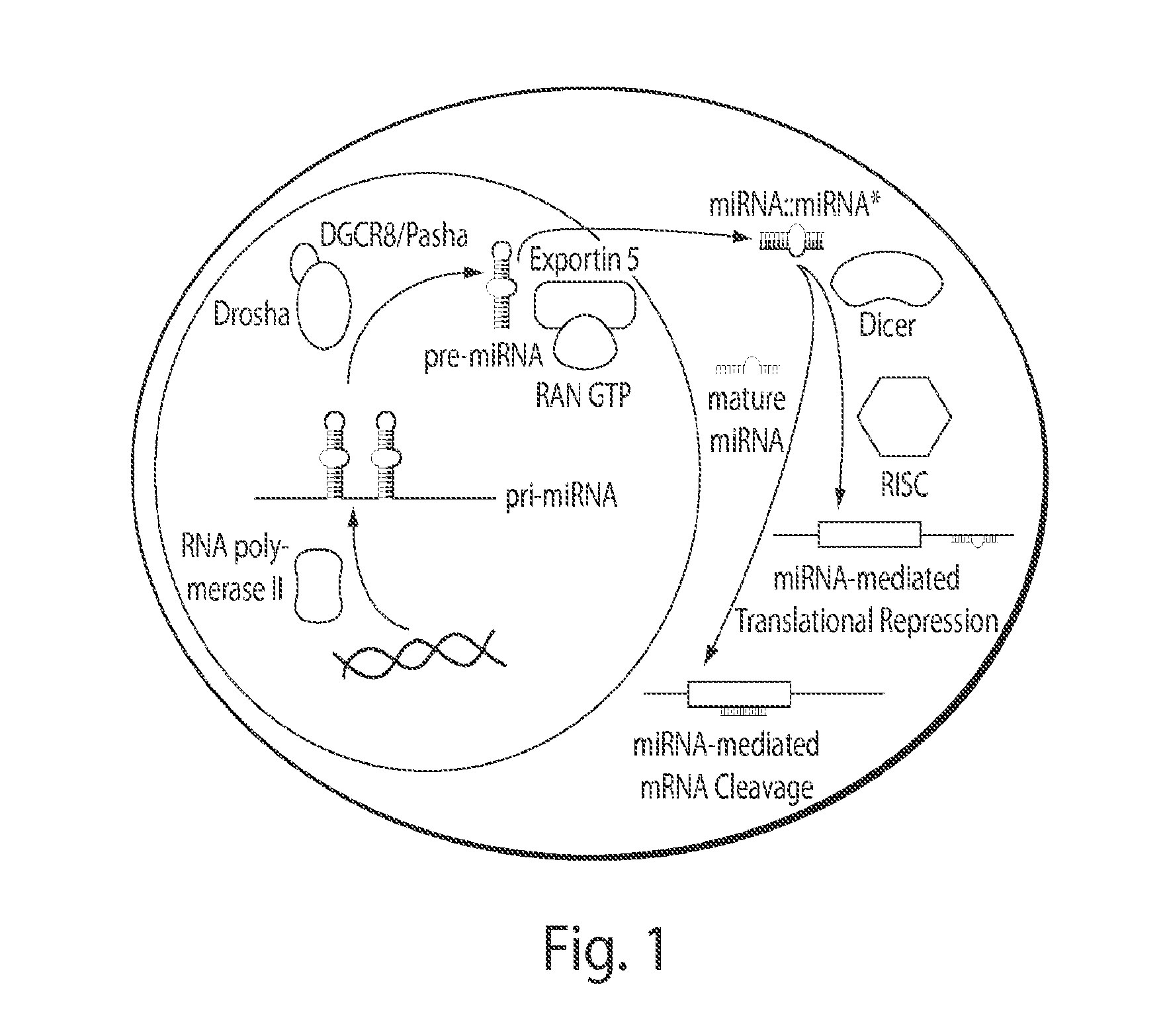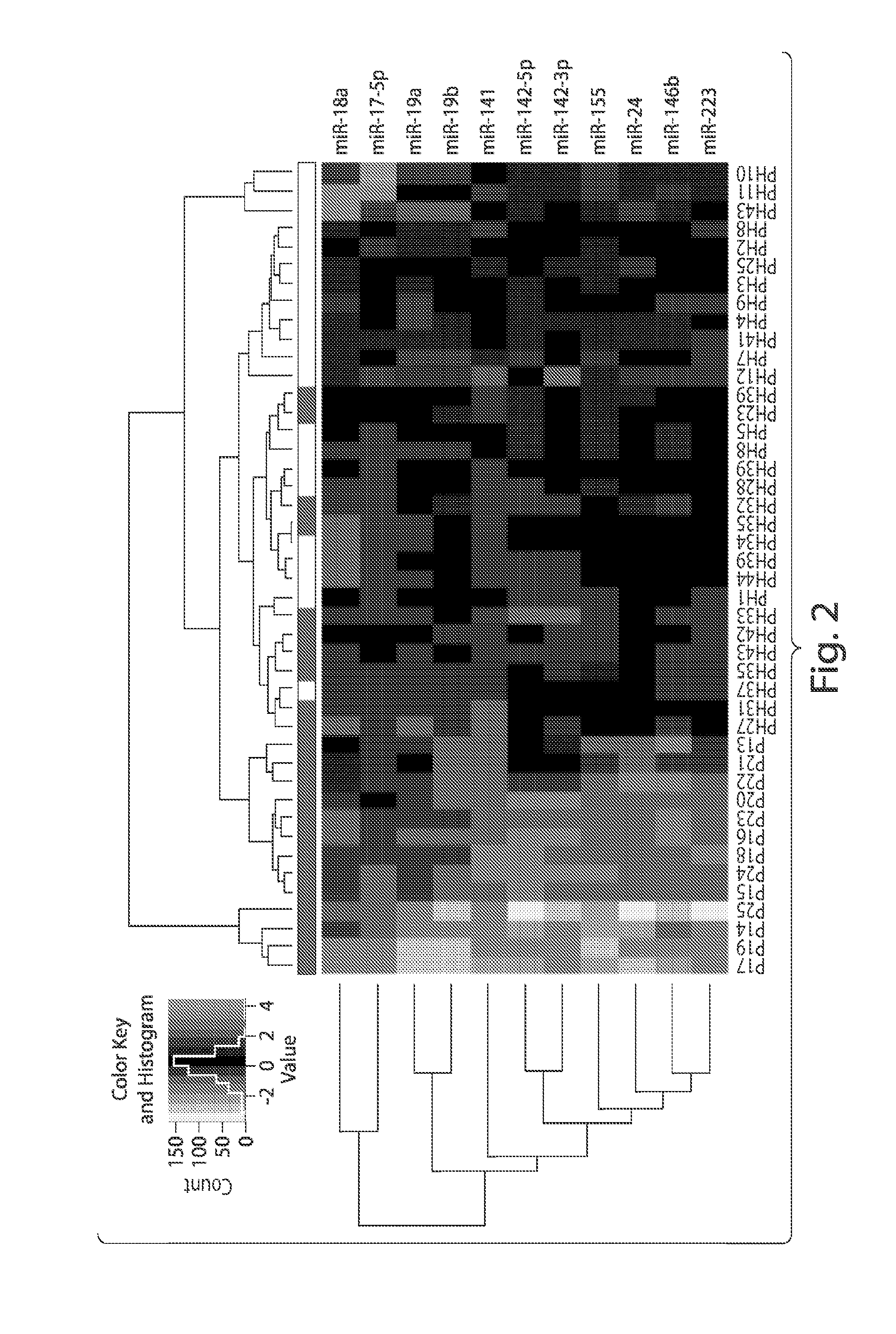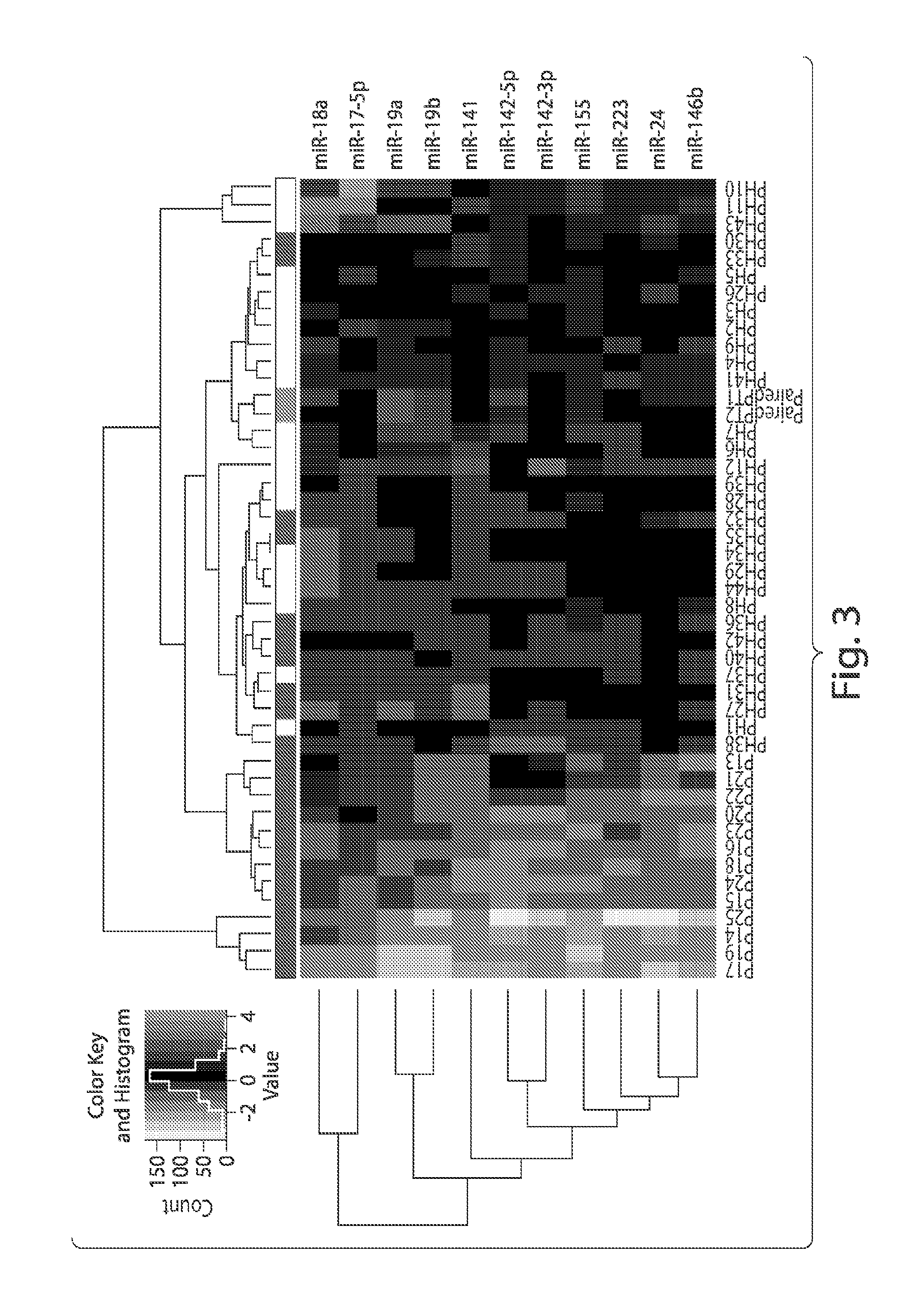MicroRNA Signatures Differentiating Uterine and Ovarian Papillary Serous Tumors
a technology of microrna and tumors, applied in the field of cancer and molecular biology, can solve the problems of inability to accurately diagnose patients and uncertain prognosis of patients
- Summary
- Abstract
- Description
- Claims
- Application Information
AI Technical Summary
Benefits of technology
Problems solved by technology
Method used
Image
Examples
example 1
Materials and Methods
[0093]After approval from the Human investigation committee at Yale, uterine and ovarian samples from untreated patients undergoing surgery at Yale New Haven Hospital (New Haven, Conn.) were collected from formalin-fixed paraffin-embedded (FFPE) tissue. All patients underwent staging surgery as initial treatment. No patients receiving neoadjuvant chemotherapy prior to surgery were included. Patient data was collected including age, race, parity and risk factors. All tumors were from primary sites. Preferred primary sites included the uterus or ovary. The carcinoma samples were histologically examined for the presence of tumor. Each sample corresponds to a single patient. A total of 22 UPSC samples and 23 EOC samples were used for analysis.
[0094]Fresh / Frozen Preparation: Specimens were immediately snap-frozen and stored at −80° C. All were examined microscopically and microdissected to ensure greater than the preferred 75% tumor cellularity. Spe...
example 2
MiRNA Expression Differentiates Uterine from Ovarian Papillary Serous Cancers
[0104]Forty-five paraffin-embedded microdissected samples of uterine papillary serous carcinomas and ovarian serous carcinomas were collected from Yale University. MiRNA expression profiles were determined by miRNA profiling analysis followed by statistical analysis.
[0105]Using the data normalization methods of Example 1, a miRNA expression signature was determined. This signature comprises at least 11 miRNAs that differentiate between uterine and ovarian papillary serous carcinomas (Table 4). When miRNA expression was compared between ovarian serous cancer and uterine papillary serous tumor samples, 8 of the 384 miRNAs showed differential expression with P-values less than 0.05. Another three miRNAs showed differential expression with P-values less than 0.1. Overall, the expression levels of the uterine serous carcinomas are higher than those of ovarian serous tumors. These results are shown graphically in...
example 3
MiRNA Expression Differentiates Synchronous Uterine and Ovarian Papillary Serous Cancers
[0106]Fresh and / or frozen, as well as paraffin-embedded, samples of concurrent uterine papillary serous carcinomas and ovarian serous carcinomas were obtained following surgical resection of the tumors of a patient. Importantly, the tumors appeared in both the uterus and the ovary. Moreover, a pathologist could not determine the origin of the tumors using known methods.
[0107]Using the papillary serous miRNA signature of Example 2, the origins of these concurrent uterine papillary serous tumors and ovarian serous tumors were determined. Specifically, the miRNA expression profile of the “unknown” tumors residing in the uterus and ovary, respectively, were determined using the miRNA data and data normalization methods described in Example I. The expression levels of the miRNAs included in the papillary serous miRNA signature of Table 4 were then compared between the “unknown” tumors residing in the ...
PUM
 Login to View More
Login to View More Abstract
Description
Claims
Application Information
 Login to View More
Login to View More - R&D
- Intellectual Property
- Life Sciences
- Materials
- Tech Scout
- Unparalleled Data Quality
- Higher Quality Content
- 60% Fewer Hallucinations
Browse by: Latest US Patents, China's latest patents, Technical Efficacy Thesaurus, Application Domain, Technology Topic, Popular Technical Reports.
© 2025 PatSnap. All rights reserved.Legal|Privacy policy|Modern Slavery Act Transparency Statement|Sitemap|About US| Contact US: help@patsnap.com



